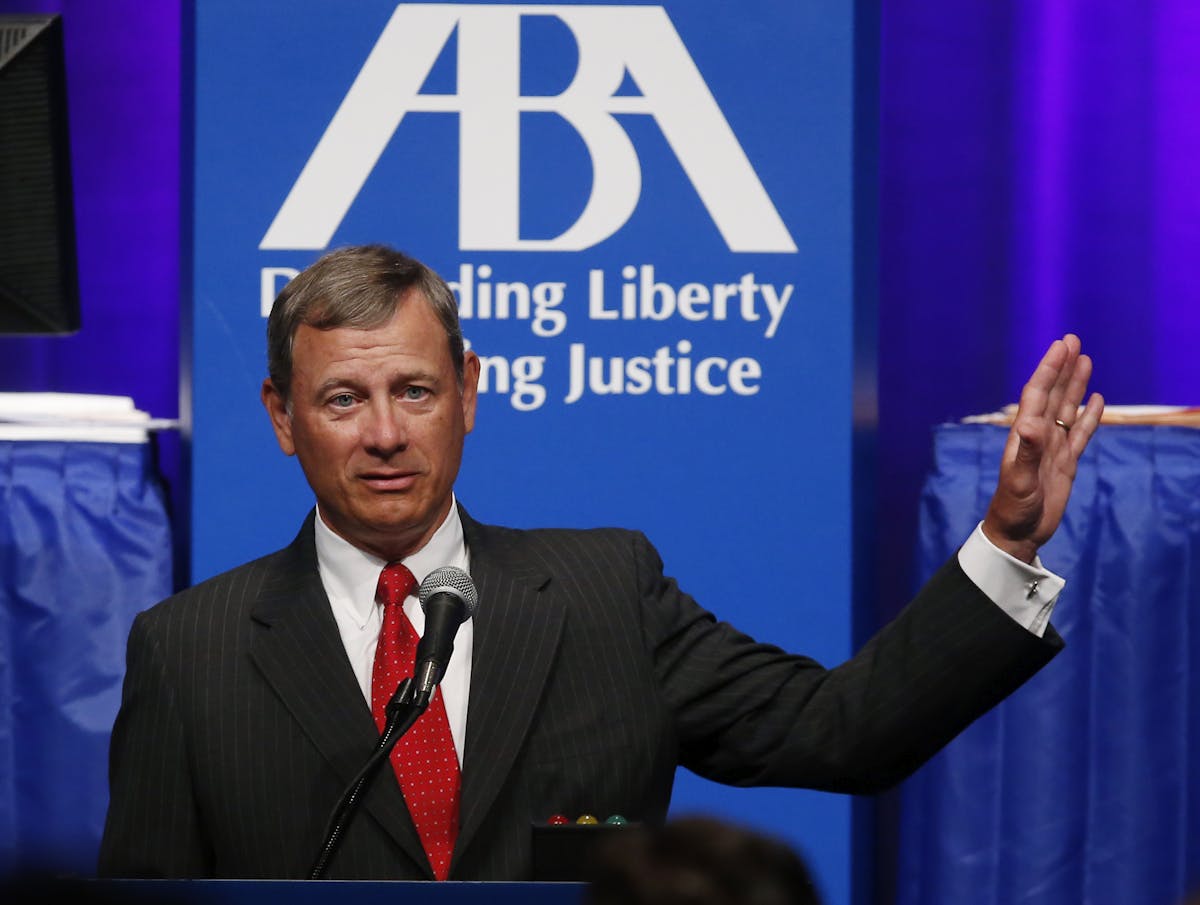American Bar Association Takes on the Supreme Court
The vote by the American Bar Association signals a clash between the right-leaning justices and the liberal professional organization.

The vote by the American Bar Association urging the Supreme Court to adopt a code of ethics signals a clash between the right-leaning justices and the liberal professional organization that has long set the rules of the road for America’s lawyers and carved out a place for itself in deciding which judges make it to the bench.
Founded in 1878, the ABA promulgates academic standards for law schools and ethics standards for the legal profession. On Monday, the organization rejected a proposal that would have allowed schools to decide whether to require a standardized exam like the Law School Admission Test in order to matriculate.
While the ABA is ostensibly nonpartisan, its upper ranks have long been seen as a Democratic redoubt. In 2012, the Political Research quarterly found the organization exhibited “strong evidence of systematic bias in favor of Democratic nominees.” It opposed the nomination of such conservative legal stalwarts as Justice Clarence Thomas, Robert Bork, Richard Posner, and Laurence Silbermann.
In response to the ABA’s progressive bent, President Bush ended the practice of providing the ABA’s Committee on the Federal Judiciary with the names of nominees before they were announced. This telegraphs that he saw the ABA not as impartial arbiters but as a political interest group. While relations warmed under President Obama, tensions occasionally flared over judicial nominees, with the organization determining that a raft of his candidates were, in its own language, “Not Qualified.”
Now, the ABA is turning its attention to the high court. In urging the Nine to “adopt a code of judicial ethics binding on justices of the Supreme Court of the United States that is comparable to the Code of Conduct,” the ABA seeks to end a state of affairs under which the high court governs itself.
The ABA also called for “federal, state, local, and territorial bar associations to adopt their own resolutions” on this score, and said “reforms to our institutions aimed at buttressing public confidence must be undertaken not in the midst of crisis, but before crises occur.” The events of January 6, 2021, are mentioned as one such crisis.
Justices are not entirely free of the rule book. 28 U.S.C. § 455 requires judges and justices alike to recuse themselves in the event of “personal bias or prejudice concerning a party” or “a financial interest in the subject matter in controversy.” Other than those, the decision whether to hear a case rests with the jurist.
The Supreme Court has usually erred on the side of justices working rather than sitting on the sidelines. In a 1978 case, Lard v. Tatum, an associate justice at the time, William Rehnquist, noted that a “federal judge has a duty to sit where not disqualified which is equally as strong as the duty to not sit where disqualified.”
That position was seconded in 2004 by Justice Antonin Scalia, who in response to calls to recuse himself because a hunting trip with Vice President Cheney gave the “appearance of impropriety” thundered that “if it is reasonable to think that a Supreme Court Justice can be bought so cheap, the Nation is in deeper trouble than I had imagined.”
The ABA is angling to erase this discretion. It laments that a “set of rules, including the full sweep of basic ethical principles applicable to other judges in this country, has not been adopted by the Court.” This state of affairs, it believes, “imperils the legitimacy of all American courts and the American judicial system.”
During the debate over whether to adopt the recommendation, which transpired at the meeting of the ABA’s House of Delegates at New Orleans, one law professor, Stephen Salzburg, made his stance clear: “the Supreme Court should have a code of ethics. Exclamation point. The end.”

